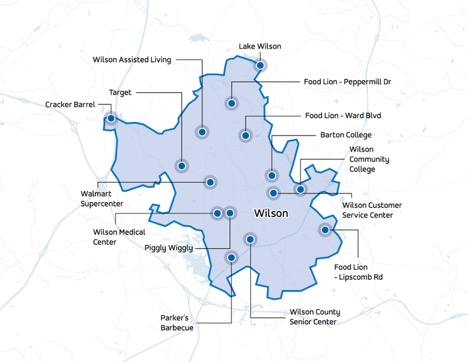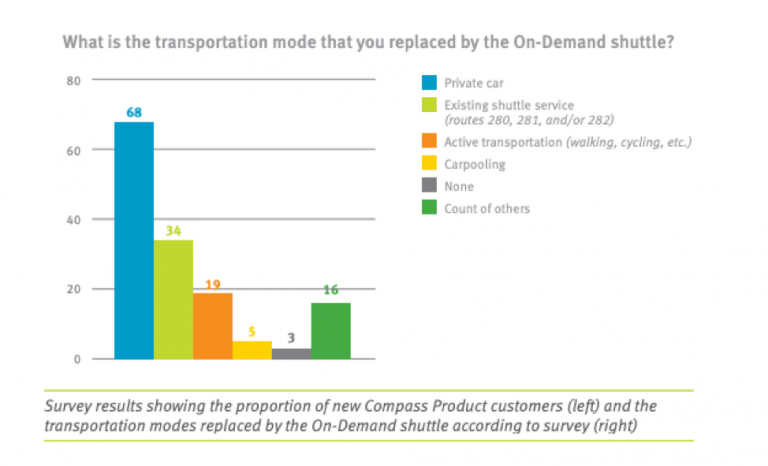April Tech Updates
- Author: Kevin Chambers
- Date: April 27, 2023
It’s been a busy month in the world of mobility and technology: several big transit agencies announcing big plans on…
Content in this document is disseminated by NCMM in the interest of information exchange. Neither the NCMM nor the U.S. DOT, FTA assumes liability for its contents or use. The opinions expressed herein are those of the author and not of the National Center for Mobility Management.
In the past few decades new technologies and business models have disrupted the status quo of personal transportation in large cities and added a plethora of mobility options at residents’ fingertips. The rise of ridehailing giants such as Uber or Lyft changed the taxi industry forever. The growing segment of micromobility operators like Lime, Bird, and Revel have introduced a fun form factor for zooming around cities. Shared electrified autonomous vehicles were thought to hold promise in achieving Vision Zero and solving our congestion woes.
That new wave of mobility added to the traditional public transportation options and today urban residents have a plethora of mobility options at their fingertips.
In rural communities, the situation looks very differently. Lacking reliable alternatives, people tend to rely on their personal cars to move around. When looking at seniors or people with mobility issues, the options are curtailed even further as the pattern shifts from being a driver to travelling as passengers. They heavily rely on the goodwill of friends and family members who shoulder a significant portion of the transportation burden. In the United States, 80% of caregivers reported that they provide transportation for their older family members, and one in four have arranged outside transportation services.
The question we begin to look at here is, “ How can new technologies and business models be adapted for rural areas and population segments that have limited physical mobility?”
Microtransit is an increasingly popular solution that can provide service in areas that are underserved or lack access to fixed route public transit. Demand-response transportation (DRT), through which passengers book a ride through a call center or a smart phone app, has been around for decades. The flexibility to designate the pick-up/drop-off location and a time most convenient to them can be an expensive challenge for operators. The recent twist on DRT is that new technology is able to improve scheduling and routing optimization, delivering a better overall fleet orchestration.
How to use microtransit to increase accessibility – RIDE Wilson, North Carolina, US
The city of Wilson, North Carolina has a population of just under 50,000 and is one of the pioneers in rethinking public transit for rural communities. Like many small communities, Wilson’s transit challenges lay in an inefficient bus network with fixed routes and schedules, resulting in hour-long waits (headways) between buses.
Wilson partnered with Via, one of the leading microtransit technology providers, to launch RIDE, an on-demand service that covers more area, reduces headways and all at the same cost as before. Interestingly, accessibility was at the heart of the design process for the new service: some vehicles are wheel-chair accessible, the service provides curb-to-curb rides for people with limited mobility and the virtual flagstops.

The program was recognized as part of the future of rural transportation by the Federal Transit Administration and Wilson was awarded $250,000 to expand the program.
Microtransit supports modeshift away from personally owned cars – Transit On-Demand Pilot, Bowen Island, CA
A similar approach was taken by an even smaller, island community in British Columbia, Canada. Bowen Island is home to just over 3,600 residents with approximately 21% of residents over the age of 65 that face specific challenges around transportation. The fixed route bus service only operates on the ring road of the island which can be too far for many seniors. In addition to that, street lights do not exist for a large part of that road network turning a walk to the bus stops into a dangerous adventure.
During 2 months in 2019, an on-demand shuttle service supplemented the existing public transit routes. The pilot project expanded the service area by 75% with a total of 17.5 kilometres (10.87 miles) of additional route service on the island. Of particular interest was understanding if microtransit services have the ability to shift people out of their personal cars.

Approximately half of the users (47%) indicated that they opted to use the Transit On-Demand service over their own private cars.
The last real-world example to be explored is SouthWest Prime service, which operates across five suburban cities in Minnesota. With almost 80 square miles, the majority of residents are heavily dependent on their personal vehicles. So there were plenty of regular transportation challengers to overcome in adding a microtransit layer. One of the key focuses of SouthWest Transit and SpareLabs, their technology provider, was to automate the manual trip matching and deploy a ‘Predicted Demand’ feature that anticipates demand before it spikes.
However, SouthWest Transit also wanted to improve it’s non-emergency medical transportation (NEMT) service, PrimeMD. This service allows registered customers to take trips outside the main Prime demand-response zone for medical appointments and book their rides up to two weeks in advance. Ridership has boomed to over 1,000 monthly boardings since the service was introduced while reducing average waiting time by 13%. Additionally, during peak service times, the NEMT vehicles are used to supplement trips.
Microtransit is utilizing the technological advances of the last decades to match demand (passengers) with supply (vehicles) on the fly. The two sections below, adapted from Liftango, summarizes the benefits of this new technology for passengers and operators.
Passenger Benefits
Operators
|
The advances in microtransit technologies have true potential to improve transportation in rural areas and for population segments that have limited physical mobility.
———
Sandra is a Shared Mobility Architect with movmi. To date, she has been involved in more than 60 shared mobility projects world-wide. Her work spans across Mobility-as-a-Service programs in Vancouver, microtransit for rural island communities, e-mopeds in Brooklyn as well as the numerous carshare services, including ekar the first service in the Middle East. Connect with her on LinkedIn.
It’s been a busy month in the world of mobility and technology: several big transit agencies announcing big plans on…
It’s been a busy first quarter of 2023, and a lot’s been happening in the world of transit technology news.…
2022 is nearly out the door, leaving some clear trends in the realm of mobility technology. Demand for all types…
Safety-focused AV Startup Argo AI and FedEx robot delivery program shut down, tele-operated cars may come to Las Vegas, electric…
MaaS Global has a cash crunch, the need for AV driving tests, rescuing the grid with EVs, and the debut…
Have more mobility news that we should be reading and sharing? Let us know! Reach out to Sage Kashner (kashner@ctaa.org).
There was a problem reporting this post.
Please confirm you want to block this member.
You will no longer be able to:
Please note: This action will also remove this member from your connections and send a report to the site admin. Please allow a few minutes for this process to complete.

